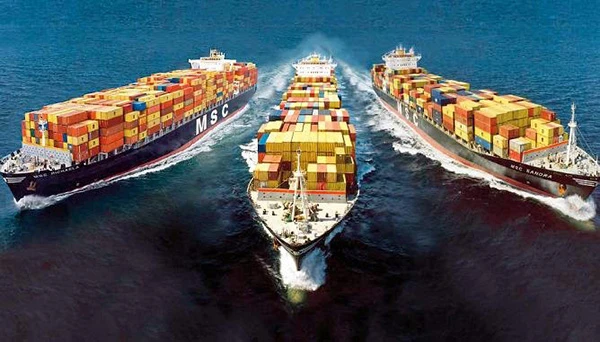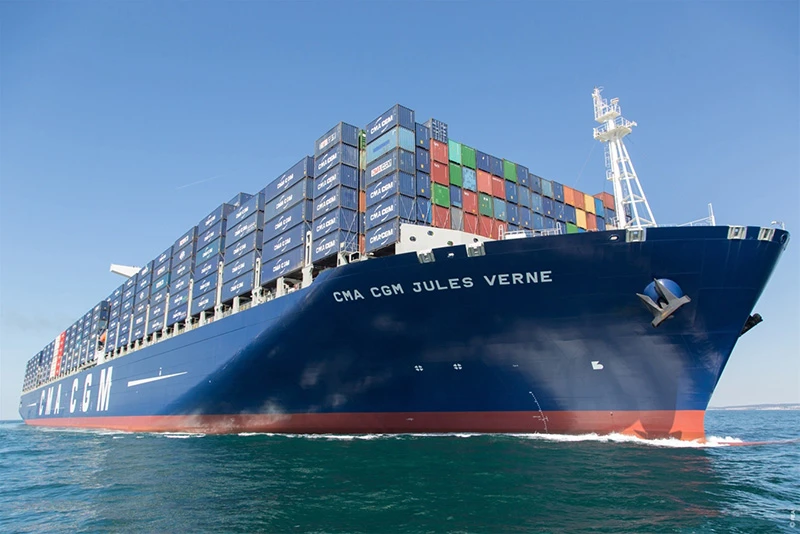International sea transport activities are growing
Sea transport is an indispensable part of goods exchange activities, associated with global trade. This is a method that was formed early on, because the ancients knew how to take advantage of sea transport routes to exchange culture and trade goods with many neighboring regions and countries around the world.
Up to now, the international shipping industry is on a strong growth and development trend. There are no longer limitations or restrictions on shipping weight as before. Nowadays, many shipping companies equip super-tonnage ships to transport goods from small packages to large volumes. Therefore, it becomes the optimal solution, helping to move import and export goods quickly, easily and safely.
The vital sea transport route has existed for a long time and greatly affects the global economy. International transport units provide customers with many service packages for transporting goods from Vietnam to the world and vice versa with low and highly competitive rates.
Types of surcharges in international sea transport
In addition to the main shipping freight, most transport vessels collect additional mandatory fees to complete the procedures for transporting goods.
D/O fee (delivery order fee)
This is the delivery order fee, corresponding to a b/l (bill of lading), appearing fee in FCL (full container load), LCL (less than container load), air cargo and bulk (bulk) cargo. This fee is paid by the consignee (recipient or purchaser) based on international commercial terms (incoterms) and the remaining terms are completed by the exporter. It helps deploy goods and documents (manifest), take orders (if there is a house b/l).
THC fee (terminal handling charges)
Port fees include fees to bring a container from the loading ship to the yard, including fees for loading and unloading goods from the ship, transporting containers from the wharf to the yard, forklifts loading the yard, port and yard workers, and port management. This fee is calculated for both ends of the import and export port.
CIC fee (container imbalance charge)
It is an empty transfer fee or container balancing fee. Because the amount of goods is not balanced at the ports, shipping lines bring empty containers from places with little cargo to ports with lots of cargo to fill them, leading to a situation where one way is full, the other side is full. runs empty. Shipping lines take advantage of CIC fees to compensate for the fees incurred on empty routes, earning additional profits because the shipper and consignee cannot actually know which areas have surplus or shortage of goods.
Cleaning fee
Belongs to the container cleaning fee paid by the consignee. Because the container contains many different items, cleaning the container is very necessary to avoid causing damage or affecting the quality of the next batch of goods. But domestic shipping lines often do not clean and this fee contributes to increasing their budget.
Handling fee
This fee is a production fee (wage) or service fee (for some other countries in the world). FWD units collect fees as wages for performing services and are collected according to imported goods. When the company issues no or little profit orders, they will charge extra to cover operating costs.
B/L fees
The fee for issuing a bill of lading is applied during the process of transporting goods, the carrier will issue the b/l, along with notifying the importing country’s agent of the b/l, tracking and order management fees.
This type specifically has a number of related fees such as the fee for transferring documents back to the original bill (courier fee), telex release fee, and bill editing fee (amendment fee).
AMS fee (automated manifest system fee)
After the 9/11 event in the US, goods when being transported to North American countries must directly go through scanners, so it is called a screening fee. Many customers still confuse the word Automated with the word Advanced for AMA or ABN fees, which is the fee when entering China and Japan.
DEM/DET fee (Demurrage / Detention fee)
When the container is in the port, brought to the warehouse for packing or return, but the time allowed by the shipping company expires, this fee will be charged, called the storage/cont fee.
CFS fee (container freight station fee)
Fees at retail warehouses include loading and unloading goods from warehouse to container or vice versa, storing retail goods, and warehouse management.
BAF fee (Bunker adjustment factor fee)
To balance transportation costs, many units charge additional BAF fees (fuel surcharge). Because in each country, fuel prices have certain differences, affecting transportation costs during trips.



 Tiếng Việt
Tiếng Việt





